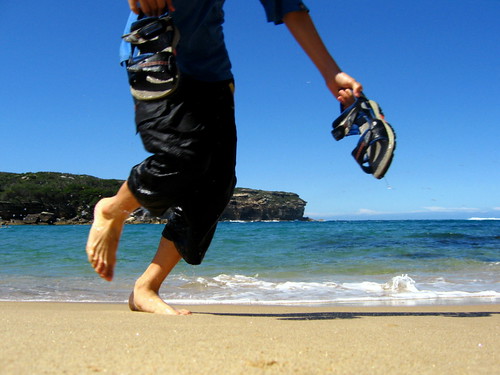I enjoy running, and am somewhat amazed as I pause to reflect that I have been a regular runner for the past 43 of my almost 58 years. In retrospect, I realize that I was a part of the first running boom during the 1970s that was led by baby boomers and popularized by Jim Fixx in his seminal book The Complete Book of Running. In those days, runners were among a relatively small minority and were regarded by many as crazy for donning skimpy shorts and torn t-shirts while loping along the roads and trails of America.

Today, running is a mainstream activity, practiced by 10% of Americans at least once a week. In Running USA’s State of the Sport – Part II report in 2010, it was reported that over 25 million Americans ran at least 50 times during 2009, and that number was up 9.2% over the previous year. To quote Running USA: “Running has grown into a sport that everyone can enjoy – no matter what age, shape or size.”
And that’s the point…although running is not for everybody, it can be a rewarding activity for those who are looking to get outside, get some very efficient aerobic exercise, and do something fun with friends and workmates. And for those who can’t run, or simply aren’t interested, walking provides many of those same benefits—get outside, do something aerobic, and have fun with friends.
So what role should nutrition play in support of running and walking? In my experience, a number of folks who are new to a regular running or walking routine have a natural tendency to overthink the nutrition and hydration required to support these activities. As a practical matter, the same balanced diet and regular hydration that people should practice during normal activity will also support the increases in calorie consumption and perspiration during and after exercise.
A balanced diet of fresh fruits and vegetables, whole grains, protein (e.g. seafood, poultry, lean cuts of meat, legumes, soy), dairy (lower and nonfat), and complex carbohydrates (e.g. whole grain pasta, whole grain rice, potatoes) will beautifully support the increases in metabolic activity associated with running and walking. If this diet sounds suspiciously like a “star worthy” diet, it is! By using Guiding Stars either in the store or online at the Guiding Stars Food Finder, it’s easy for me and for you to identify the more nutrient dense foods from the categories I’ve mentioned.
With regard to hydration, regular aerobic exercise certainly causes increased perspiration, which in turn accelerates dehydration. So if the normal recommended amount of water consumption is 8 cups a day, you might want to consider adding 1 or 2 additional cups, particularly right after exercising.
And here’s a little secret…People who run and walk regularly generally burn more calories and stimulate a more active metabolism than people who are sedentary. As a result, your body can justify an occasional healthy post-run or post-walk snack if hunger strikes before the next meal. Fresh fruit like apples, pears and peaches, or “crunchy” vegetables like carrot sticks often do nicely. Or even a healthier version of a nutrition bar.
My personal favorite is Larabar, which often earn 1 or 2 stars in the Guiding Stars system, depending on the flavor. The ingredient list on one my favorite flavors, Larabar Chocolate Coconut Chew, which earns 2 stars: dates, almonds, walnuts, unsweetened cocoa powder and unsweetened coconut. But there are countless nutritious snack possibilities out there, and you will undoubtedly find your own favorites.
So, as we prepare to watch the 2012 Summer Olympic Games in London (what a great venue!), let’s get outside, do a little running or walking, spend some active time with friends, and feel good about what we’re eating!